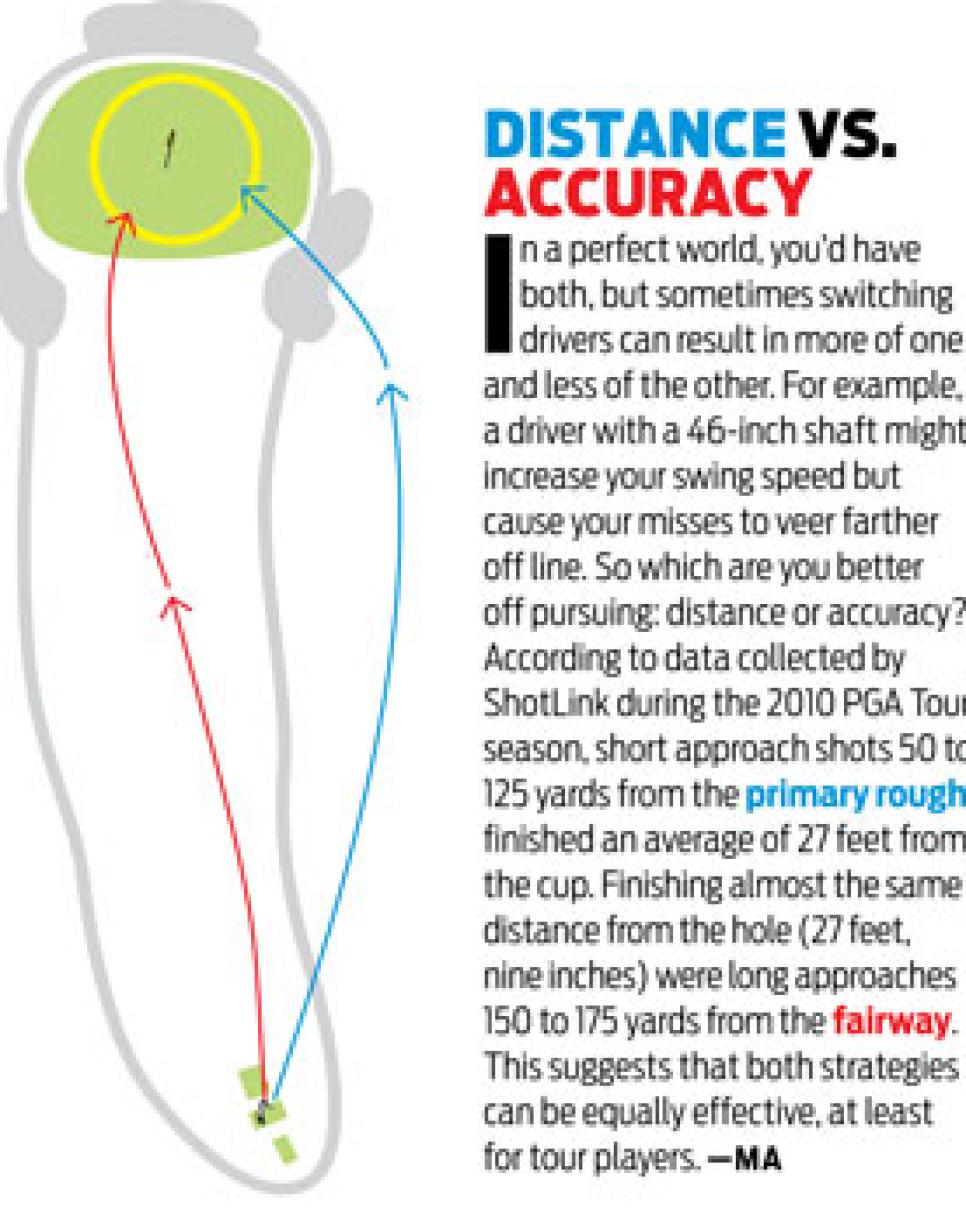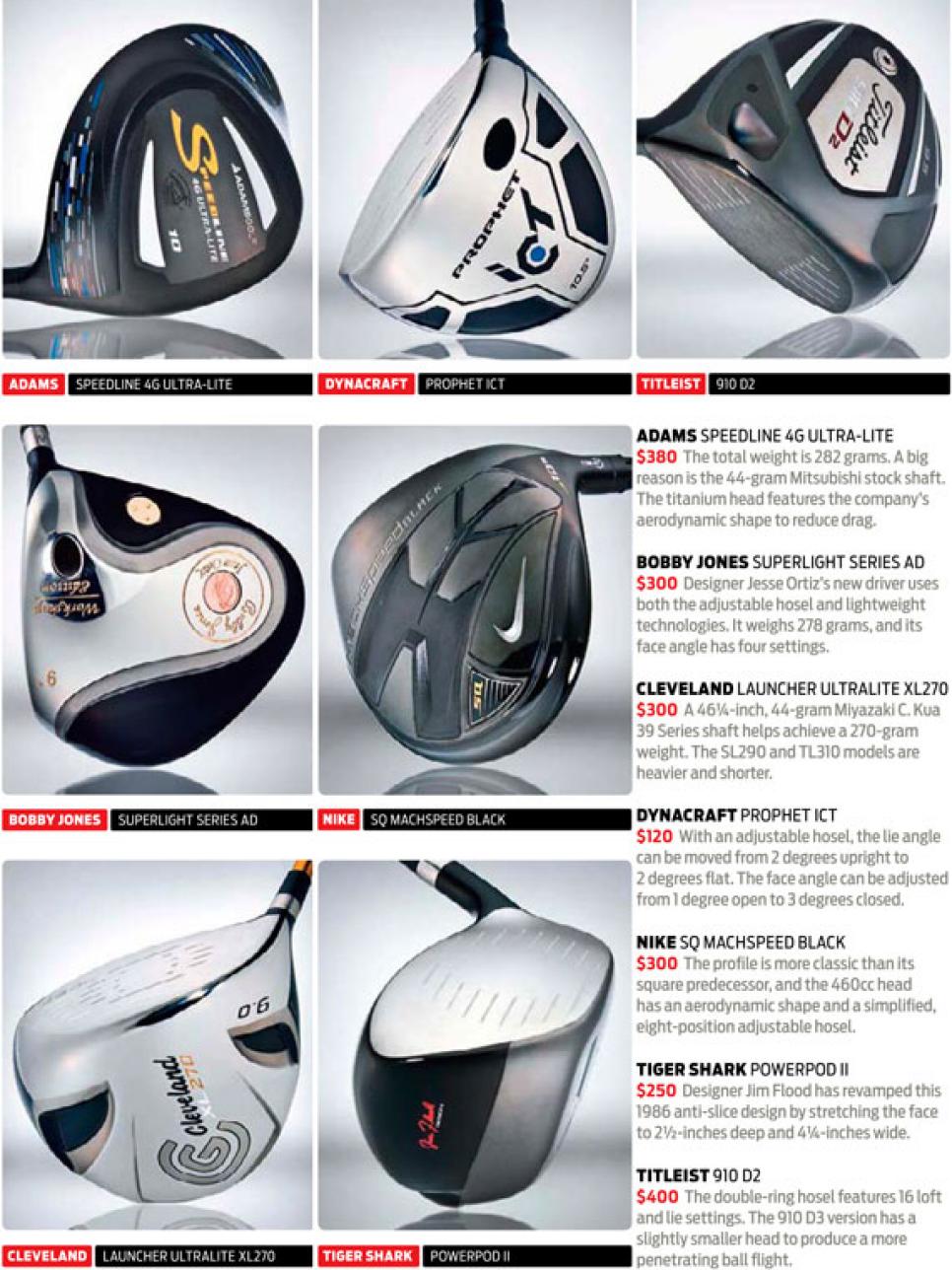Equipment
Tired Of Being The Short Hitter?

It's no fun when the group always arrives at your drive first. And it's humiliating when your playing partners don't even bother to identify the ball because there's no doubt their drives finished well past yours. As you pull the headcover off your fairway wood there's polite silence, yet you swear you can hear laughter.
There is a legal limit on how big a driver can be (460 cubic centimeters) and a restriction on how fast its face can spring (.830 coefficient of restitution). So to the short-knocker, given his shaken psychological state, it might seem there's no hope. But don't let tears ruin your makeup just yet. Two emerging distance technologies--lighter club weights to increase swing speed and adjustable hosels to better control trajectory--are not governed by the USGA.
When Boo Weekley put Cleveland's XL270 driver in play earlier this season, its 44-gram shaft was the lightest ever used on the PGA Tour. With a 192-gram head and a papery 26-gram grip, the driver was about 20 percent lighter overall than those typically played on tour.
"Honestly, I wasn't expecting our tour staff to gravitate toward this product," says Nate Radcliffe, Cleveland's metal-wood development manager. "But we've seen that any swing speed might increase with a lighter weight. Golfers don't need to feel the individual components of the club, just the overall system."
So is lightweight your answer to more distance? "What fits one player's sensitivity won't necessarily fit another player's," says Dean Reinmuth, one of Golf Digest's 50 Best Teachers.
"A player with some fluctuation in his swing--like a Furyk,
or Weekley
--they really sense the clubhead throughout the swing, so you wouldn't be surprised if they could handle clubs with a lighter weight. Players with one clean move, like a Steve Stricker, they tend to prefer heavier shafts so their tempo doesn't get quick."
Results are as variable as the individual, but Radcliffe says an optimistic, realistic gain from using a lightweight driver might be three miles per hour of swing speed, which could translate to about 10 yards.
Then again, it's possible your distance shame is tied to trajectory. If your drives balloon, slice, hook or otherwise thud into the rough, your inconsistent contact could be the result of an improper fit. A precise custom-fitting, such as from a driver with adjustable loft-, lie- and face-angle settings, might be the answer. (It's also possible you simply need a lesson, Sally.)
Although adjustable drivers from TaylorMade and Nike are designed to correct the broadest range of left and right ball flights, the Titleist 910 driver aims to refine launch conditions by allowing the lie and loft to be changed independently. However, as with all adjustable hosel drivers, the 910's face angle opens and closes as you change the loft.
Some believe an adjustable hosel is a quick fix that commits a golfer to a fundamentally unsound swing. But consider this: Of the 87 Titleist staffers across eight professional tours who switched to the 910 when it first came out, only 22 kept the hosel in the neutral position.
So if you're already hitting fairways, try a lightweight driver. If your ball flight looks bad, toy with an adjustable. Or just buy a tube of lipstick. You're still away.


.jpg)